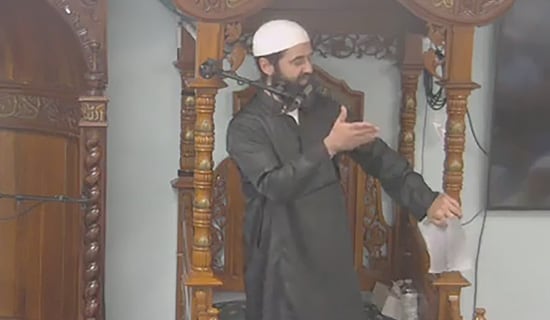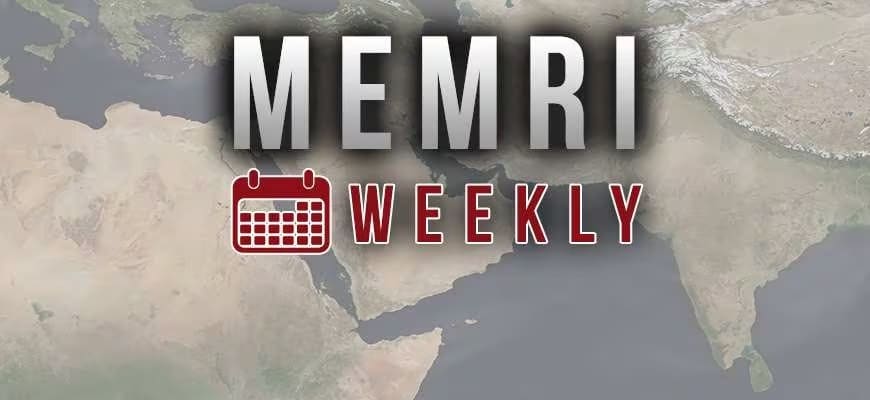Recently, a leading Pakistani daily cited a report of the International Labour Organization (ILO) saying that there are 11-12 million children working as laborers in Pakistan.[1] The ILO sheds new light on the difficult conditions in which children in Pakistan and other south Asian nations are living.[2]
The Dawn newspaper noted that the figure of 11-12 million working children[3] in Pakistan shows a huge jump from the ILO's own estimate of a child labor force of 3.3 million in Pakistan in 1996. This increase in the population of working children in South Asia stands in contrast to the overall "slowing down,'' as reported by the ILO, in the number of child workers across the world.[4]
The report comes at a time that a non-governmental organization in Pakistan has released a report on the sexual abuse of children in Pakistani society, highlighting a relatively less-discussed, closed issue affecting Pakistani children. In a well-researched report, titled "Cruel Numbers 2009,'' Sahil, a volunteer organization that has been working against child sexual abuse in Pakistan since 1996, recorded a total of 2,012 cases of child sexual abuse in Pakistan during 2009, though the actual number may be much higher, as many such cases go unreported in Pakistan's orthodox society.[5] Sahil based its results on an extensive review of Pakistani newspapers, police reports, and its own survey.
Underlining the need for open discussion of the issue in Pakistani society, the Sahil report observes: "Sexual abuse of children is cloaked in silence and is often pushed into the deep and dark corners of our homes and minds, left unattended and untreated. But those who suffer through it carry scars throughout their lives.''
The following three reports examine the issues of child labor and sexual abuse of children in Pakistani society: the first are excerpts from the Cruel Numbers 2009 report, followed by two editorials on child sex abuse and children in the Pakistani workforce respectively.
NGO Report: "2,012 Cases of Child Sexual Abuse were Recorded from All over Pakistan during 2009; This Number Shows a 9.4% Increase''
"A total of 2,012 cases of child sexual abuse were recorded from all over Pakistan during 2009. This number shows a 9.4% increase as compared to last year; this means that approximately 3.3 children were sexually abused per day.
"The sex-wise distribution of data also presents recognized results. The findings show that [the victims were] 68% girls and 32% boys...
"Among the crime categories, abduction cases top the list of sexual abuse crimes against children with approximately 41% [of the] cases. The second highest crime category was that of rape and sodomy, with as many as 28% cases of both girls and boys taking place. Gang rape and gang sodomy was the third highest category of crime, with 15% of cases taking place. The fourth highest crime category was that of attempted rape/sodomy, with 9.5% [of the] cases. A total of 6% of children were murdered after being sexually assaulted, whereas, 0.5% of cases were of those children who were murdered in an attempt of sexual assault.
"The results from the data of 2009 show that a total of 4,222 abusers were involved in abusing 2,012 children. The type of abusers with the highest percentage was that of acquaintances 3,431 (81%); the second highest percentage was that of strangers 663 (15.5%); followed by perpetrators within the family 97 (2.5%); and almost 31 (0.5%) of the abusers were unidentified in the report cases.
"The most vulnerable age group of children to abuse is that of 11-15 years, in which almost 25.5% of cases have taken place; it is followed by 6-10 years, with 16.5% of cases.
"The data shows that children were abused almost everywhere, from inside home to places outside [the] home, with 15% of cases taking place at the abusers' place, and 11% of cases at the victim's place.
"Cases of one-time assault were the highest (54%); however, still about 7% of the victims were being abused on a long-term basis ranging from one day to more than six months.
"Punjab province topped the list by reporting a majority (62%) of the cases, followed by Sindh (28%); Federal Capital Islamabad (7%); North West Frontier Province [now Khyber Pakhtunkhwa province] (1.5%); Baluchistan (1%); and the Azad Jammu and Kashmir [Pakistani Kashmir] (0.5%). The rural-urban divide of the cases showed about 63% of cases occurred in rural areas and 37% of cases in the urban population.
SUPPORT OUR WORK

"The identification of 70% of victims was revealed by printing names (63%) and pictures (7%) in the newspapers, whereas the identification of 30% of victims was not revealed.
"As many as 81% of the reported cases of CSA [child sexual abuse] were registered with the police, whereas 6% of cases were unregistered and the status of 13% was not mentioned.''
Editorial on Child Sex Abuse: "The Challenge is to Make Children, Parents, and Communities Aware that Such Violations Do Occur''
In an editorial titled "Child Abuse,'' the Peshawar-based newspaper The Post commented on the Sahil report, observing that the Pakistani media can play an important role in raising awareness about the issue of child sexual abuse in Pakistani society.
The editorial also underlined the need for including lessons in school textbooks to make children aware about body safety, noting: "A course must be included in the curriculum to equip the child with the knowledge of body safety.''
The following are excerpts from the editorial:[6]
"[The Cruel Numbers 2009] report should raise alarm bells for the government, as children are the future of our nation. Steps to eradicate the menace of child sexual abuse have to be taken sooner rather than later in order to protect the innocence of our youth. Most people in the country are not even aware of what constitutes abuse. 'Abuse,' in general, has been defined as cruel and violent treatment of somebody, and includes the violation of certain fundamental and universal human rights. Child sexual abuse refers to sexual abuse of a child by an adult or some other person significantly older or in a position of power or control over the child.
"The issue of child sexual abuse is not often publicly discussed in families or communities in our country, as it is considered a 'taboo.' Due to our social norms, it is a taboo to talk about sex or anything pertaining to it. This leads to a general lack of preventative information among children. Parents as a rule talk very little of sex with their children and the children are rarely, if at all, aware of what constitutes molestation. Thus, when a child is molested, he/she will rarely report it. Though the child might not report it, he/she goes through extreme mental trauma. A wide range of psychological, emotional, physical, and social effects have been attributed to child sexual abuse, including anxiety, depression, obsession, compulsion, grief, post-traumatic stress disorder symptoms such as flashbacks, emotional numbing, social dysfunction, and dysfunction of relationships.
"The challenge is to make children, parents, and communities aware that such violations do occur and how they may be prevented as well as ensure that the warning signs are detected early on to help the recovery and reintegration of the child. This can be done through education. Children should be educated about their rights so that they know what constitutes abuse and molestation. Molested children should be provided adequate counselling from the psychological point of view. Parents should be educated and be told to allow the imparting of preventative knowledge.
"The media can play a very effective role in countering this menace by launching an awareness campaign about child sexual abuse. By creating awareness among the masses, this evil practice can be curtailed. The government has to play an important role to ensure a safe and secure future for our children. Apart from that strict laws should be promulgated and the punishment for abuse and molestation increased as the present punishments are not harsh enough to act as deterrents. A course must be included in the curriculum to equip the child with the knowledge of body safety. The police department should facilitate the process of registering the FIR [First Information Report] for the victims of child sexual abuse. Working children should be sensitized and trained to appropriately respond to sexual abuse.''
Editorial on Child Labor: "The Government Must Prioritize Education through the... Judicious Use of Funds; Otherwise, Millions of Our Children will Continue to Be... Trapped in Labor''
Following the ILO report, the liberal Pakistani newspaper Dawn wrote an editorial, expressing "grave concern'' that a large number of Pakistani children are out of school and are engaged in different kinds of jobs such as domestic help, auto repair shops, and tea shops, a common sight across Pakistan.
The editorial, titled "Trapped in Child Labour,'' called upon the Pakistani government to prioritize the education of children and use available funds judiciously in order to tackle the problem of child labour in Pakistan.
The following are excerpts from the editorial:[7]
"Pakistan has not conducted a comprehensive national child labor survey since 1996 when 3.3 million of our then 40 million children were found to be economically active on a full-time basis.
"Our child population today is 70 million, and one civil society organization has estimated the number of child laborers to be between 11 million and 12 million. Even without hard statistics, the fact that children, instead of being at school, work as domestic help and in auto repair shops, tea shops, etc., is a matter of grave concern. In fact, many child laborers are in hazardous occupations. They work in stone quarries, coal mines, factories, etc, despite a national policy calling for the immediate elimination of the worst forms of child labor.
"Several laws to eliminate child labor have been passed. Under the National Policy and Plan of Action, specific programs have been implemented to address issues of children working in various sectors, including the soccer ball, surgical instruments, and leather-tanning industries.
"At the same time, projects have also been launched to improve school enrolment. However, that we need to do better is evident from the fact that child labor is still permissible and widespread. As a recent ILO report on the subject advocates, we need to renew and re-energise the commitment and conviction with which we initially launched the campaign against child labor.
"Anti-child labor measures should include plugging the loopholes in the relevant laws as well as increasing child-labor interventions, which have largely remained small-scale projects. Central to tackling this scourge are poverty-alleviation measures and a commitment to free and quality education. The latter means that the government must prioritize education through the adequate and judicious use of funds. Otherwise millions of our children will continue to be kept out of school and trapped in labor.''
[1] Dawn (Pakistan), May 10, 2010.
[2] www.timesofindia.com (India), May 10, 2010.
[3] Another recent article in Dawn puts the number of child laborers in Pakistan at 70 million. It is not clear whether that number was in fact meant to refer to the entire child population of Pakistan, or is in fact a much higher estimate of the child labor force. Dawn (Pakistan), May 10, 2010. http://www.dawn.com/wps/wcm/connect/dawn-content-library/dawn/the-newspaper/national/70-million-child-labourers-in-pakistan-ilo .
[4] Daily Times (Pakistan), May 9, 2010.
[5] http://www.sahil.org/abt_publications_cruelnumbers.html, Pakistan, accessed May 23, 2010.
[6] The Post (Pakistan), May 17, 2010.
[7] Dawn (Pakistan), May 12, 2010.




